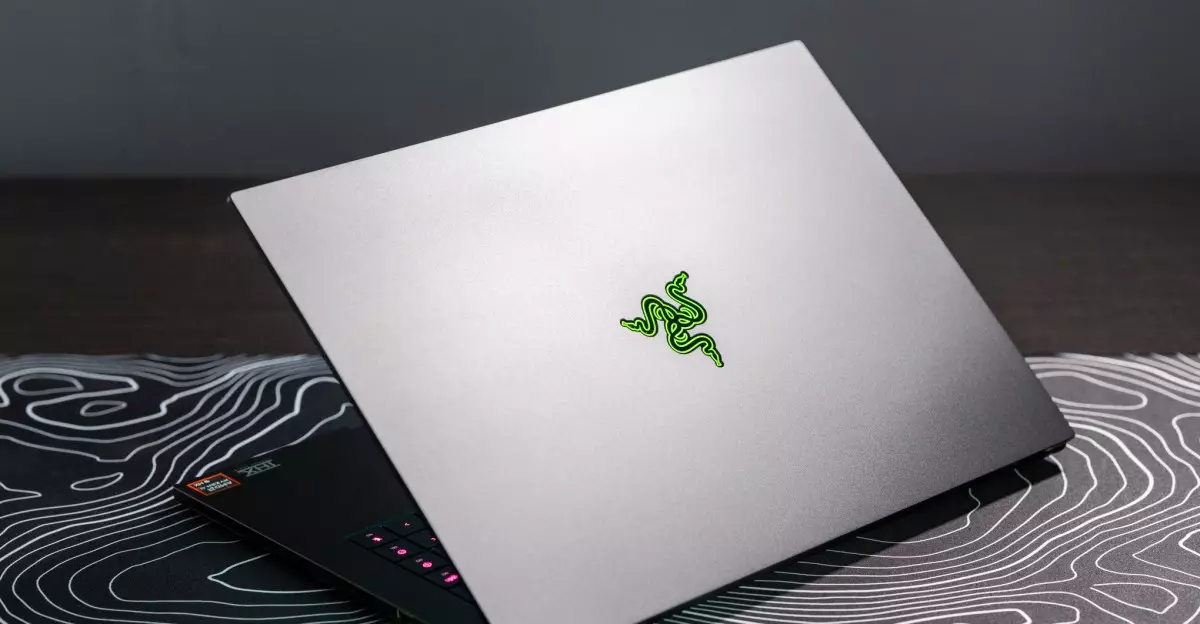The latest iteration of the Razer Blade 16 marks an exciting advancement in the realm of gaming laptops. Prized as the sleek rival to Apple’s MacBook Pro, this model successfully marries aesthetics with functionality. With a design that has been refined to a lighter and thinner build, the Blade 16 kicks off its introduction by shedding 7 millimeters in thickness and an impressive 0.8 pounds in weight. This ease of portability is essential for gamers and professionals who require both performance and mobility. In a landscape where gaming machines often resemble bulky tanks, the Blade 16 stands out as a beacon of elegant engineering.
However, the reduction in size comes with a caveat that many potential users may wonder about: does this also affect thermal management? With the last iteration receiving criticism for slightly overheating under pressure, the new model must prove its worth in sustained performance without sacrificing cooling efficiency. As consumers, we are left to ponder if less is indeed more, or merely an exercise in futility.
Display and Build Quality: The Visual Wonders
Razer continues to impress with its 16-inch OLED display, boasting a resolution of 2560 x 1600 and a blistering refresh rate of 240Hz. Gamers know the importance of response times and fidelity, and this screen assures vibrant colors and deep blacks that elevate the gaming experience to new heights. Whether indulging in adventure-filled games or demanding creative work, users can expect crystal-clear visuals that bring their projects to life.
The accompanying keyboard and trackpad also demonstrate a solid design philosophy. However, a controversial change introduced in this edition is the new column of macro keys. While they may seem enticing to hardcore gamers, the key placements often lead to frustrating errors, like accidentally muting the microphone instead of selecting an arrow key. A nod to ergonomics could have made a big difference, as the original inverted-T arrow layout remains the gold standard for easy access.
Power Performance: RTX 5090 and Beyond
The heart of the Razer Blade 16 is undeniably its flagship Nvidia RTX 5090 GPU. This powerhouse promises remarkable improvements over its predecessor, boasting around a 20 percent increase in efficiency. Such statistics appeal to avid gamers and content creators who crave high fidelity and seamless performance when tasks become demanding. However, as the reviewer navigated through various testing scenarios, it became apparent that any advancement in processing power might come at a steep price.
Priced at $4,499.99, the Blade 16 raises eyebrows across the board. For a high-end laptop that aims to consolidate gaming and productivity, the cost begs the question: does the cutting-edge technology warrant this price tag? While there’s plenty to love about the GPU’s capabilities, sustained use without crashing or random bluescreens presents a significant hurdle that dampens its allure. Achieving optimal performance should always come hand-in-hand with reliability.
Battery Life: The Achilles’ Heel?
Despite the impressive hardware lineup, the Blade 16 falters in an area crucial to modern laptop users: battery life. With everyday tasks like running productivity applications, gamers found themselves needing a recharge far more often than expected. While many gaming laptops struggle with battery longevity, the Blade’s struggle becomes disconcerting especially when compared to what competitors offer. The AMD Ryzen AI 9 HX 370 CPU is capable of stretching beyond eight hours of work in other models, yet the Blade 16’s erratic battery behavior can only conjure frustration for those who plan to use the device on the go.
It would be easy to overlook this shortcoming if users had the option of seamless transitions from gaming to productivity. Yet here we see a lingering question: can a laptop truly be considered a jack-of-all-trades when it seems to falter in basic productivity scenarios?
The Razer Blade 16 has all the makings of a gaming powerhouse, boasting high-quality hardware and a stunning design. It positions itself in a unique niche that appeals to both gamers and creative professionals alike. However, the pricing and sketchy battery performance combined with the early stability issues serve as a crucial warning sign. Users may find themselves wrestling with the idea of dropping nearly five grand on a machine that might not deliver the reliability expected from such an investment.
In a world teeming with choices, the Blade 16 stands out with its elegance and power, yet the challenges it faces cannot be ignored. The question indeed lingers—are the features and build quality enough to justify the steep expense, or would a dual-laptop setup offer better value? As time goes on and more users embrace this device, clear consensus will emerge. For now, those impressed by its specs must remain vigilant for potential pitfalls that may overshadow its brilliance.

